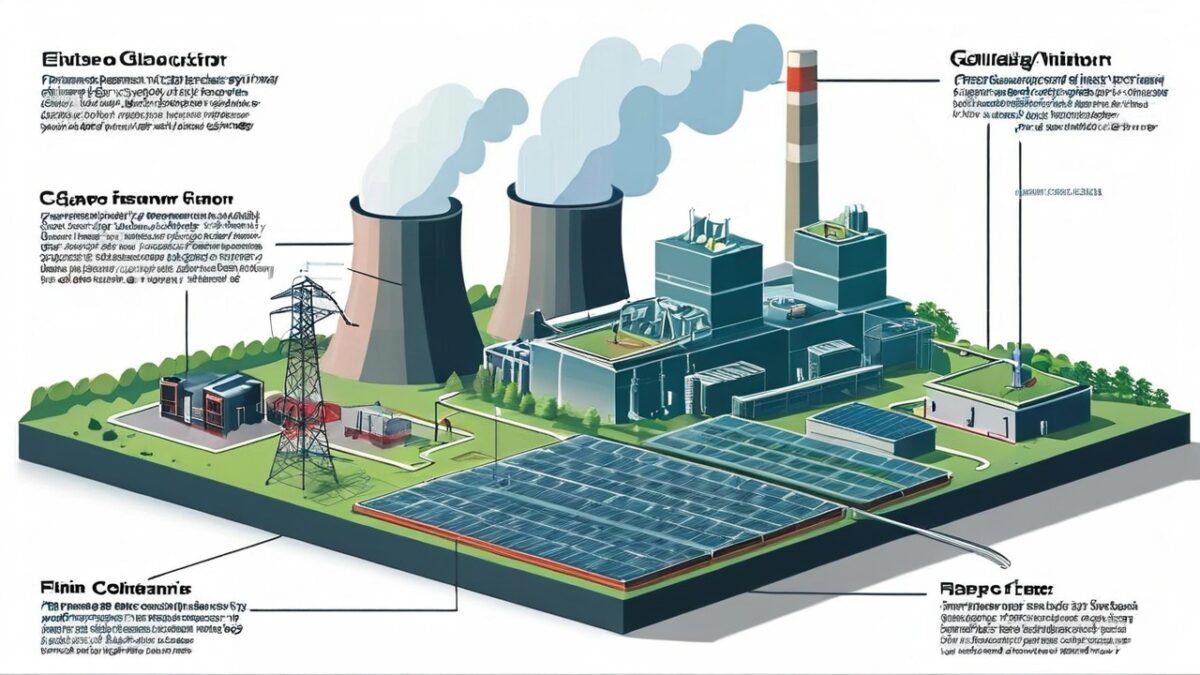Introduction to Watts and Gigawatts
The measurement of power is essential for understanding energy systems, whether in electrical engineering, renewable energy, or industrial applications. Two common units for measuring power are watts (W) and 3.49e10 watts to gw (GW). Understanding the conversion between these units is crucial for accurate calculations and comparisons across various energy systems.
In this article, we will focus on converting 3.49e10 watts into gigawatts (GW). This conversion is vital for simplifying large-scale energy measurements, especially when dealing with the power capacities of power plants, electrical grids, or renewable energy systems.
What is a Watt?
The watt (W) is the standard unit of power in the International System of Units (SI). It is used to quantify the rate of energy transfer. One watt is defined as one joule per second, meaning that a device that consumes or produces one watt of power uses or generates one joule of energy each second. Watts are typically used for small-scale electrical measurements such as household appliances, light bulbs, and computers.
What is a Gigawatt?
A gigawatt (GW) is a much larger unit of power, often used to measure the output of large-scale electrical plants or the capacity of national power grids. One gigawatt is equivalent to one billion watts (1 GW = 1,000,000,000 W). As energy demand increases and the scale of power generation expands, gigawatts become a more convenient unit for expressing vast quantities of power.
Conversion of 3.49e10 Watts to Gigawatts
To convert 3.49e10 watts to gw to gigawatts, we need to understand the relationship between watts and gigawatts. Since one gigawatt is equal to one billion watts, the conversion process is as follows:
3.49e10 watts = 3.49 × 10^10 watts
To convert this into gigawatts, we divide by one billion (10^9):3.49×1010 watts=3.49×1010109 gigawatts=34.9 GW3.49 \times 10^{10} \, \text{watts} = \frac{3.49 \times 10^{10}}{10^9} \, \text{gigawatts} = 34.9 \, \text{GW}3.49×1010watts=1093.49×1010gigawatts=34.9GW
Thus, 3.49e10 watts is equal to 34.9 gigawatts.
Why Is This Conversion Important?
1. Large-Scale Energy Measurements
Converting watts to gigawatts allows for a simplified understanding of power generation capacities on a larger scale. Power plants, especially nuclear and hydroelectric plants, can generate capacities in the gigawatt range. For example, a typical large power plant might have an output of 1-3 gigawatts, while the total energy consumption of a country might be measured in the tens or hundreds of gigawatts.
2. Electrical Grid Management
When managing electrical grids, knowing the conversion from watts to gigawatts is essential. Grid operators work with power generation and consumption data in the gigawatt range, and understanding these conversions helps ensure a stable supply of energy across regions.
3. Renewable Energy Projects
With the rise of renewable energy projects such as solar farms, wind farms, and large-scale battery storage systems, power output is often measured in gigawatts. For example, large solar power plants may produce upwards of 1 gigawatt, and understanding how these power outputs compare to traditional energy sources helps in planning and investment strategies.
Common Applications of Gigawatts in the Energy Sector
1. Power Plant Capacities
Power plants, whether conventional fossil fuel plants, nuclear plants, or renewable energy plants, are often rated in gigawatts. For instance:
- Nuclear Power Plants: Large nuclear reactors often have an output in the range of 1 to 3 gigawatts. For example, the Kashiwazaki-Kariwa Nuclear Power Plant in Japan has a total capacity of about 7.9 gigawatts.
- Hydroelectric Plants: Major hydroelectric dams such as the Three Gorges Dam in China have an impressive output of over 22 gigawatts.
- Wind Farms: The Hornsea One Wind Farm in the UK, one of the world’s largest, produces 1.2 gigawatts of power.
2. National and Regional Power Grids
National electrical grids are designed to handle power loads measured in gigawatts. For instance:
- The U.S. electrical grid has a peak capacity that can reach over 1,000 gigawatts.
- The European Union also has an extensive interconnected grid that requires accurate measurement and management of power capacities in the gigawatt range.
3. Space Exploration
In the realm of space exploration, satellites and spacecraft that use solar power also measure their energy generation in terms of gigawatts. This high level of energy is necessary to power scientific instruments, communication devices, and propulsion systems in space.
Impact of Large-Scale Energy Generation in Gigawatts
1. Environmental Considerations
The generation of power in gigawatts has significant environmental implications, particularly when fossil fuels are used. The larger the power plant, the greater the amount of fuel required, leading to higher carbon emissions. However, renewable energy sources such as solar and wind, with capacities in the gigawatt range, are becoming more common and are crucial in reducing global carbon footprints.
2. Energy Storage and Efficiency
To meet the fluctuating demands of energy consumers, energy storage systems capable of storing gigawatt-scale energy are in development. Large-scale battery storage systems help manage power loads, stabilize the grid, and ensure a reliable supply of electricity even during peak demand times.
Conclusion
The conversion of 3.49e10 watts to gw into gigawatts (34.9 GW) demonstrates the scale of power generation and consumption in modern energy systems. Gigawatts serve as a practical and essential unit of measurement for large-scale power plants, electrical grids, and renewable energy projects. Understanding this conversion allows professionals in the energy industry to communicate effectively and manage power resources efficiently, ensuring a stable and sustainable energy supply.
